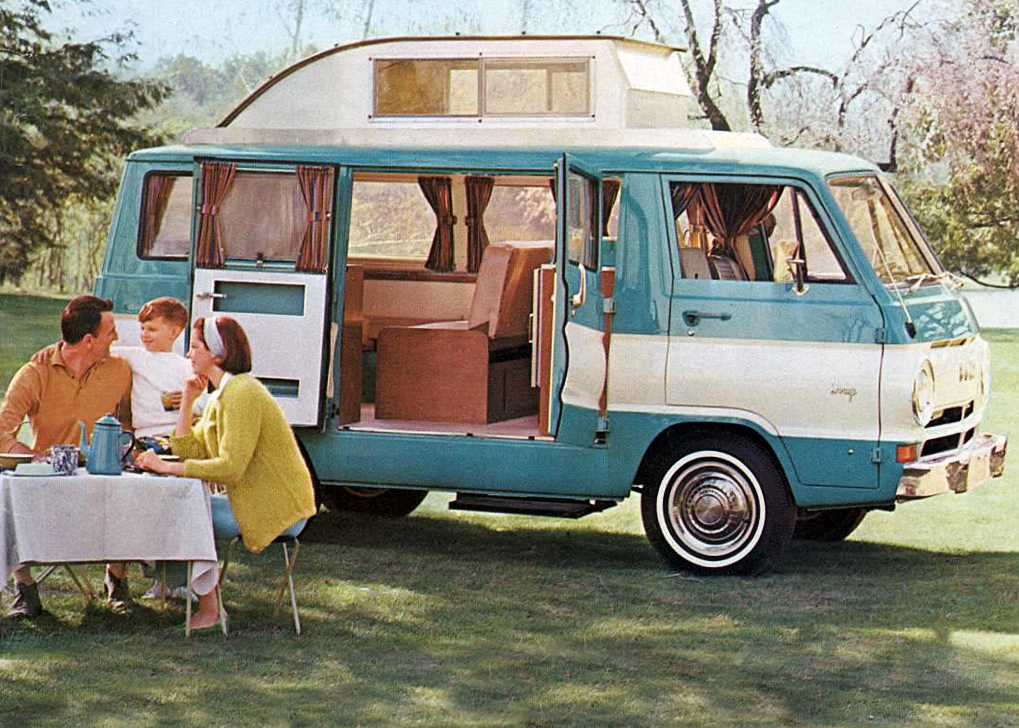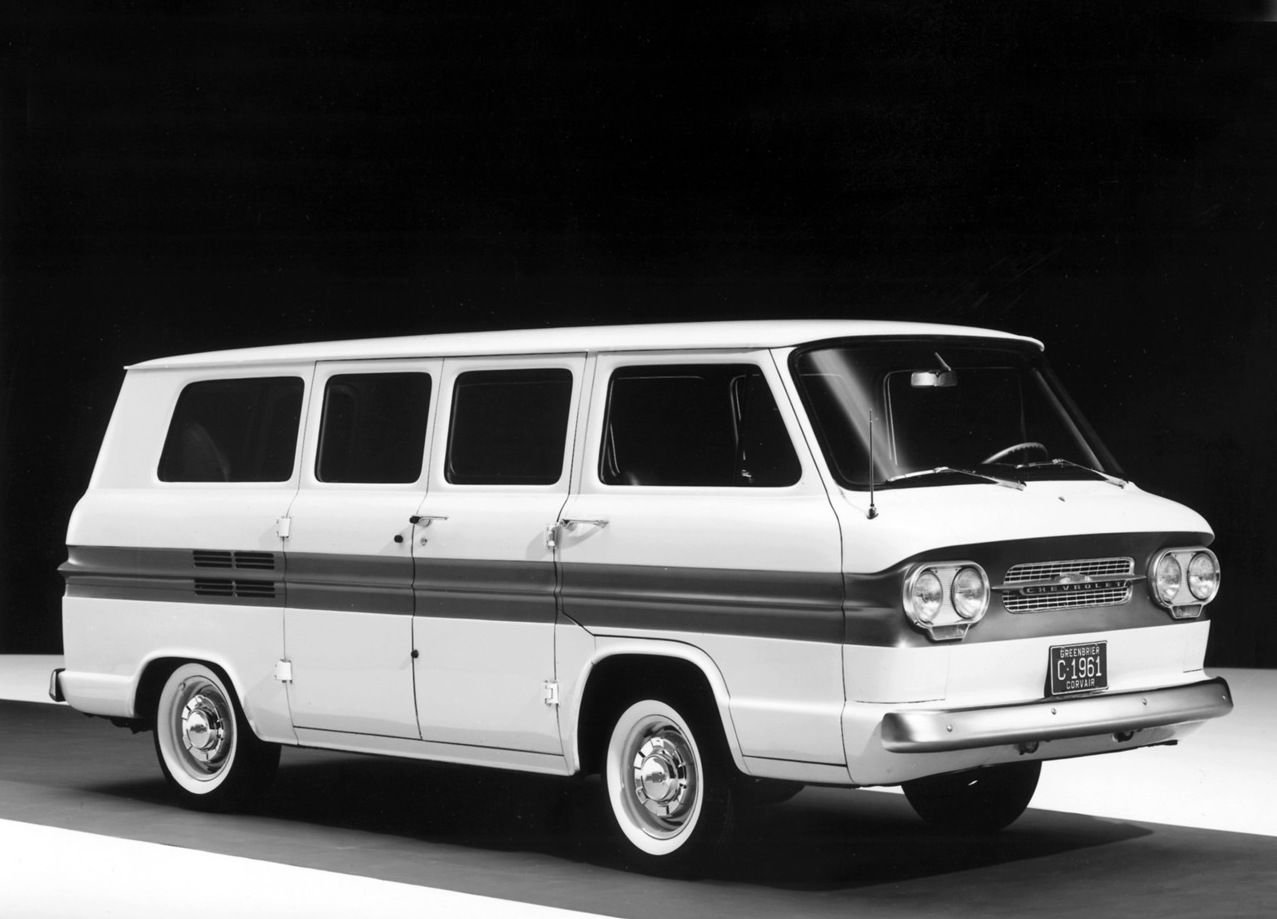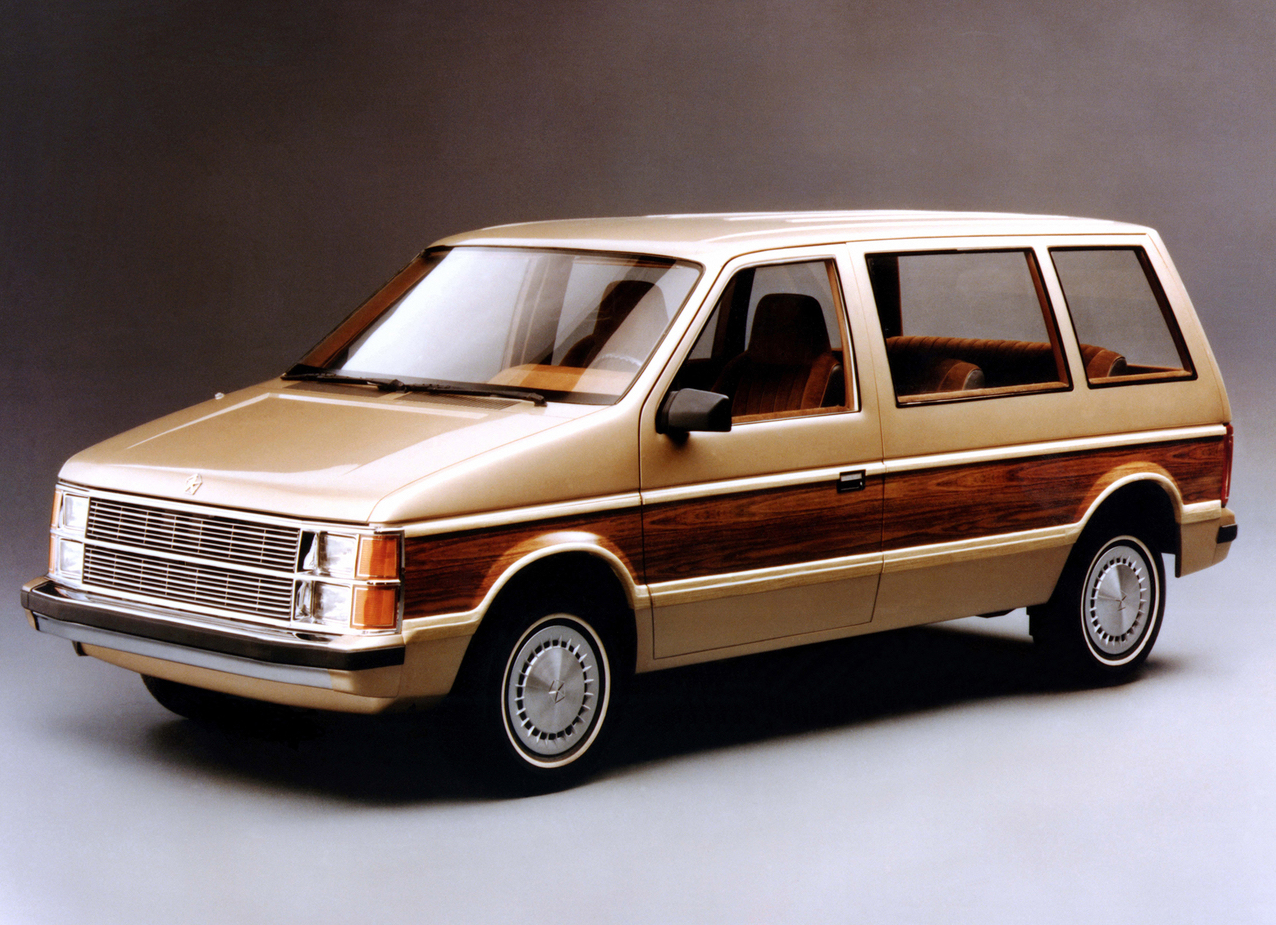5 Proto-minivans before the Plymouth Voyager
According to legend, the first real “minivan” broke ground in 1984 when Lee Iacocca and his band of wizards at Chrysler conjured up the Plymouth Voyager. It looked like a van but drove like a car. What sorcery was this? Gone were the days when your van shared a massive V-8 with Dad’s emissions-strangled Chevy Nova. From then on, the minivan dominated the scene as the go-to vehicle for anyone wanting to fit a large amount of people or things in a small space.
As the cliché goes, the rest is history. But is that all there is to the narrative? We dive into some Voyager predecessors to find out:
1964–70 Dodge A100

The 1984 Plymouth Voyager was not the first compact van or van-like vehicle. It was just the first one to take on the minivan nomenclature. Chrysler itself had a relatively tiny van in its back catalogue with the A100, which Dodge made from 1964–70.
Dodge’s A100 van was, in technical terms, adorable. It shared a platform with the Dodge Dart and the first models were powered by Chrysler’s Slant-6 engine. The Dodge A100 couldn’t break the speed limit if it was carrying anything more than two or three violins and a dog. But it was a proto-minivan in the sense that it carried a lot of stuff and wasn’t the size of a humpback whale calf (although it still handled like a milk crate and looked like one). The automotive market still had to learn a few things before anything could truly earn the coveted title of “minivan.”
1961–67 Ford Econoline

Ford had a small van on the scene way before 1984—the first generation Ford Econoline. Before the Econoline became the barge of choice for churches and homeschool moms, it was a compact van built from 1961–67 that was meant for hauling stolen copper wire or knock-off Fender Stratocasters.
It looked like a loaf of bread with wheels and carried itself with all the grace of a microwave falling down a flight of stairs. Like the A100, it was based on a car, in this case the Ford Falcon, and was powered by an inline-six that provided barely serviceable output. The Econoline checked a few minivan boxes but it wasn’t quite there yet.
1961–65 Chevrolet Corvair Greenbrier

General Motors wasn’t gonna let those punks at Ford and Dodge have all the vans. They threw their rear-engine Corvair into Photoshop, messed around with the Skew tool and came up with the Corvair Greenbrier Wagon.
The Greenbrier used a Corvair-sourced powertrain which placed a flat-six engine in the rear of the van. It was like a Volkswagen microbus, only worse. Like competing vans from other American carmakers, the Greenbrier was woefully underpowered. The flat-six produced a piddly 95 horsepower that qualified the Greenbrier van for carrying all of your awful sons to band practice and not much else. Eventually the engine moved to the front and Chevy only made the Greenbrier from 1961–65. I applaud Chevy for having the courage to make a rear-engine van like Volkswagen’s.
1982–88 Nissan Stanza Wagon

Note: my editor told me I had mention the Nissan Stanza wagon. Also known as the Nissan Prairie in Japan, the U.S.-spec Stanza wagon was given to us just two years before the Plymouth Voyager. Before Japanese carmakers conquered the market in the early 1990s with minivan juggernauts like the Honda Odyssey and the Toyota Previa, the Stanza wagon and some big, gross vans were just about the only options available to anyone that wanted something just a little more spacious or economical than a Ford Crown Victoria wagon.
In addition to being a cute little wagon thing, the Stanza had a trick up its proverbial sleeve. Unlike most vans/wagons at the time, the Stanza was available with all-wheel drive. This made it the perfect wagon for shuttling all your sick iguanas to the vet in rain or snow. Is this a minivan before the minivan? Maybe? Did Nissan beat Chrysler to the punch?
1982–88 Honda Civic Wagovan

In the early 1980s, Honda took a look at the third-generation Civic and thought it would be a perfect candidate for a tall wagon van thing. Make way for the Wagovan. Aesthetically, the Wagovan stood somewhere between a washing machine and a Honda Odyssey made out of LEGO bricks.
Like the Stanza, the Civic was available with all-wheel drive so you could scream down the highway off-ramp outside exit 67 with only a slight chance of stuffing it into a guard rail. I don’t know if Japanese carmakers follow the model of Darwinian evolution, but Honda’s rolling identity crisis served as a “missing link” of sorts between the station wagons in days of yore and the shining new minivans of the future. The Wagovan and Stanza Wagon’s time on the market eclipsed the arrival of Chrysler’s canonical first minivans. Honda went on to make the now-ubiquitous Odyssey and Nissan made the spaceship-like Quest.
While America’s Big Three started off right with tiny vans in the 1960s, they eventually evolved into bloated, inefficient church buses by the time the 1970s rolled around. It took manufacturers like Honda and Nissan to convince the car-buying public that vans or van-like cars didn’t need to stretch a city block and get single-digit miles per gallon.
Eventually, Chrysler compiled everyone’s notes and created a new segment of vehicle that combined the smallness of the A100s and Econolines of old with the car-ness of the Civic and Stanza. It was Van Time for everyone and it would remain Van Time for years to come.


